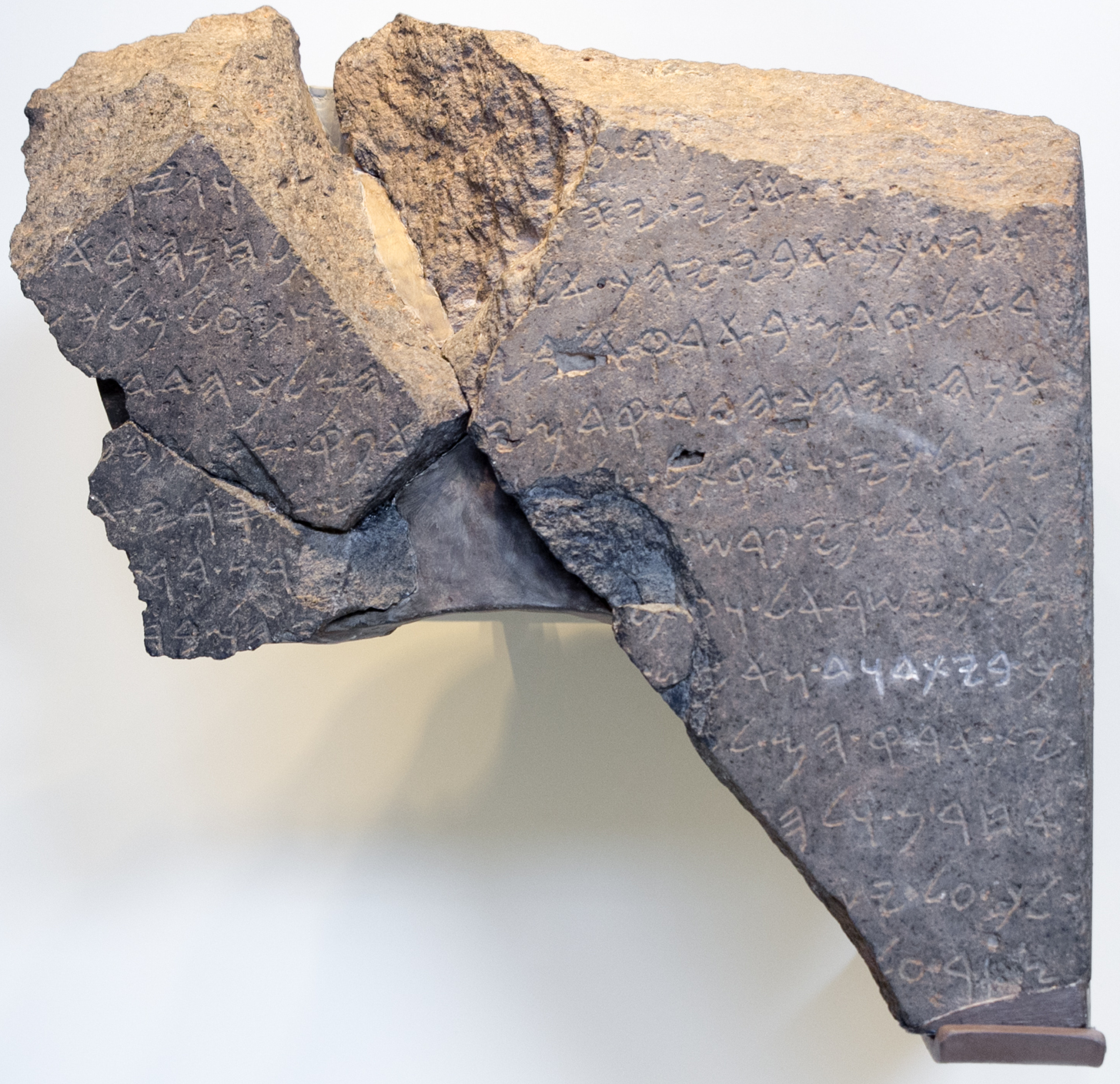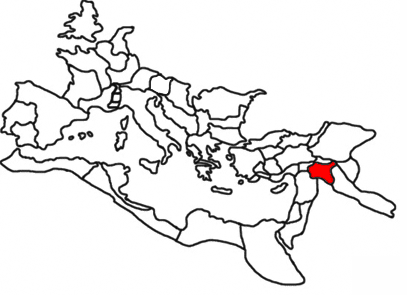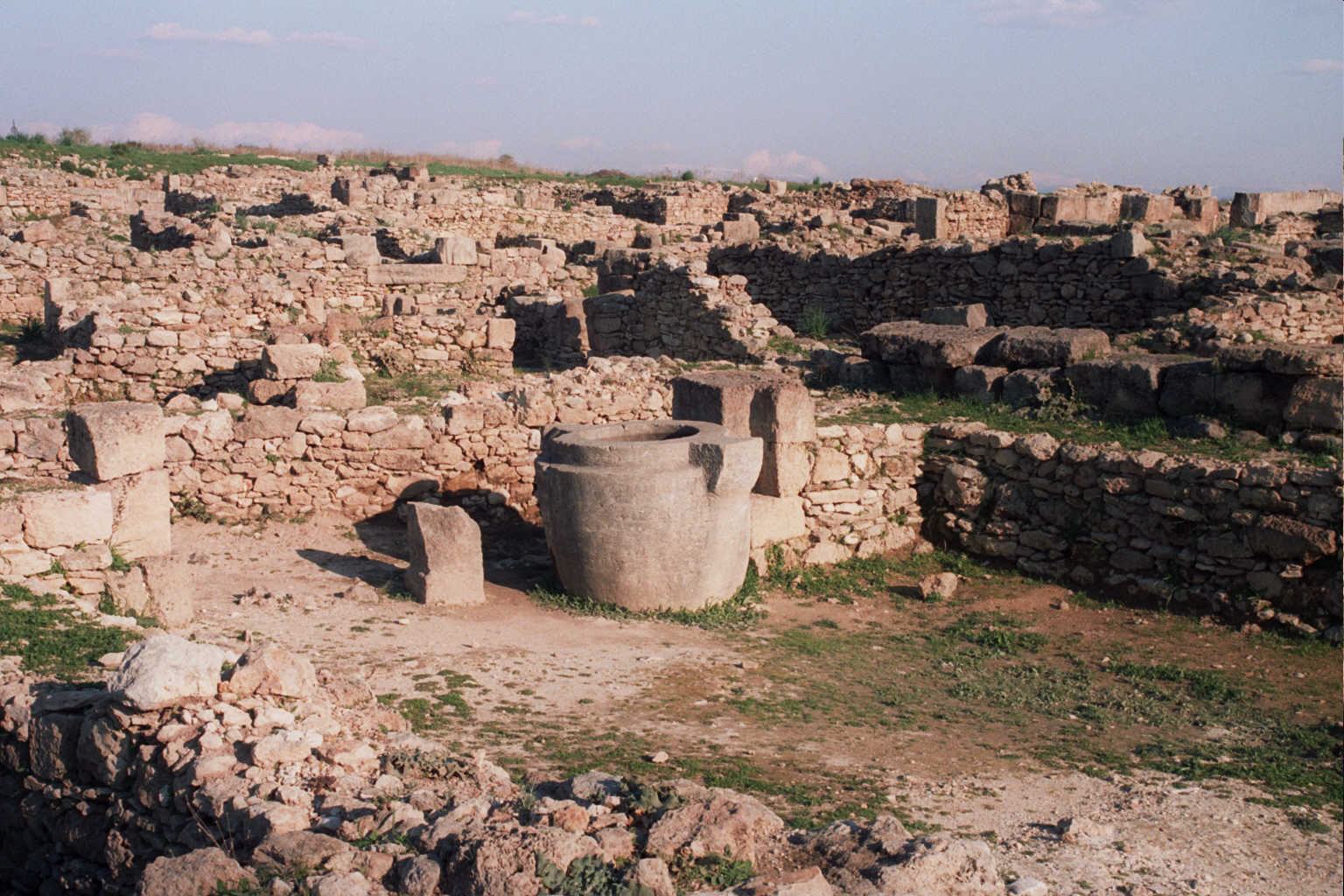|
Edom
Edom (; Edomite language, Edomite: ; , lit.: "red"; Akkadian language, Akkadian: , ; Egyptian language, Ancient Egyptian: ) was an ancient kingdom that stretched across areas in the south of present-day Jordan and Israel. Edom and the Edomites appear in several written sources relating to the late Bronze Age and to the Iron Age in the History of the ancient Levant, Levant, including the list of the New Kingdom of Egypt, Egyptian pharaoh Seti I from c. 1215 BC as well as in the chronicle of a campaign by Ramesses III (r. 1186–1155 BC), and the Tanakh. Archaeological investigation has shown that the nation flourished between the 13th and the 8th centuries BC and was destroyed after a period of decline in the 6th century BC by the Neo-Babylonian Empire, Babylonians. After the fall of the kingdom of Edom, the Edomites were pushed westward towards southern Kingdom of Judah, Judah by nomadic tribes coming from the east; among them were the Nabataeans, who first appeared in the h ... [...More Info...] [...Related Items...] OR: [Wikipedia] [Google] [Baidu] |
Bozrah
Busaira (; also Busayra, Busairah or Buseirah) is a town in Tafilah Governorate, Jordan, located between the towns of Tafilah (Tophel) and Shoubak and closer to the latter. Bozrah ( ; also Botsra, Botzrah, Buzrak) is a Hebrew Bible, biblical city identified by some researchers with an archaeological site situated in the town of Busaira. In biblical narrative Bozrah in Edom Bozrah means sheepfold or enclosure in Hebrew and was a pastoral city in Edom southeast of the Dead Sea. According to the biblical narrative, it was the home city of one of Edom's kings, Jobab ben Zerah, Jobab son of Zerah () and the homeland of Jacob's twin brother, Esau. :''And these were the kings who reigned in the land of Edom before the reigning of a king over the sons of Israel ... And Bela (biblical figure), Bela died, and Jobab the son of Zerah, from Bozrah, reigned in his place''. () The prophets Amos (prophet), Amos, Isaiah, and Jeremiah predicted Bozrah's destruction: :''But I will send a fire ag ... [...More Info...] [...Related Items...] OR: [Wikipedia] [Google] [Baidu] |
Edomite Language
Edomite is a Northwest Semitic Canaanite language, very similar to Biblical Hebrew, Ekronite, Ammonite, Phoenician, Amorite and Sutean, spoken by the Edomites in Idumea (modern-day southwestern Jordan and parts of Israel) in the 2nd and 1st millennium BCE. It is extinct and known only from an extremely small corpus, attested in a scant number of impression seals, ostraca, and a single late 7th or early 6th century BCE letter, discovered in Horvat Uza. Like Moabite, but unlike Hebrew, it retained the feminine ending ''-t'' in the singular absolute state. In early times, it seems to have been written with a Phoenician alphabet. However, by the 6th century BCE, it adopted the Aramaic alphabet. Meanwhile, Aramaic or Arabic features such as ''whb'' ("gave") and ''tgr/tcr'' ("merchant") entered the language, with ''whb'' becoming especially common in proper names. Like many other Canaanite languages, Edomite features a prefixed definite article derived from the presentative partic ... [...More Info...] [...Related Items...] OR: [Wikipedia] [Google] [Baidu] |
Jordan
Jordan, officially the Hashemite Kingdom of Jordan, is a country in the Southern Levant region of West Asia. Jordan is bordered by Syria to the north, Iraq to the east, Saudi Arabia to the south, and Israel and the occupied Palestinian territories to the west. The Jordan River, flowing into the Dead Sea, is located along the country's western border within the Jordan Rift Valley. Jordan has a small coastline along the Red Sea in its southwest, separated by the Gulf of Aqaba from Egypt. Amman is the country's capital and List of cities in Jordan, largest city, as well as the List of largest cities in the Levant region by population, most populous city in the Levant. Inhabited by humans since the Paleolithic period, three kingdoms developed in Transjordan (region), Transjordan during the Iron Age: Ammon, Moab and Edom. In the third century BC, the Arab Nabataeans established Nabataean Kingdom, their kingdom centered in Petra. The Greco-Roman world, Greco-Roman period saw the ... [...More Info...] [...Related Items...] OR: [Wikipedia] [Google] [Baidu] |
Timna Valley
The Timna Valley (תִּמְנָע, ) is located in southern Israel in the southwestern Arava/ Arabah, approximately north of the Gulf of Aqaba and the city of Eilat. The area is rich in copper ore and has been mined since the 5th millennium BCE. During early antiquity, the area would have been part of the Kingdom of Edom. A large section of the valley, containing ancient remnants of copper mining and ancient worship, is encompassed in a recreation park. Ramon Airport is located near the entrance to the Timna Valley. Geological features Timna Valley is notable for its uncommon stone formations and sand. Although predominantly red, the sand can be yellow, orange, grey, dark brown, or black. Light green or blue sand occurs near the copper mines. Water and wind erosion have created several unusual formations that are only found in similar climates. Solomon's Pillars The most well-known formation in Timna Valley are Solomon's Pillars. The pillars are natural structures that ... [...More Info...] [...Related Items...] OR: [Wikipedia] [Google] [Baidu] |
History Of The Ancient Levant
The Levant is the area in Southwest Asia, south of the Taurus Mountains, bounded by the Mediterranean Sea in the west, the Arabian Desert in the south, and Mesopotamia in the east. It stretches roughly north to south, from the Taurus Mountains to the Sinai Peninsula and Syrian Desert, and east to west between the Mediterranean Sea and the Khabur river. The term is often used to refer to the following regions or modern states: Syria, Lebanon, Israel, Palestine, and Jordan. In addition to Sinai(Egypt), Cyprus and Cilicia( southeastern Anatolia). The Levant is one of the earliest centers of sedentism and agriculture throughout history, and some of the earliest agrarian cultures, Pre-Pottery Neolithic, developed in the region. Material was copied from this source, which is available under Creative Commons Attribution 4.0 International License Previously regarded as a peripheral region in the ancient Near East, modern academia largely considers the Levant as a center of civilization o ... [...More Info...] [...Related Items...] OR: [Wikipedia] [Google] [Baidu] |
Kingdom Of Judah
The Kingdom of Judah was an Israelites, Israelite kingdom of the Southern Levant during the Iron Age. Centered in the highlands to the west of the Dead Sea, the kingdom's capital was Jerusalem. It was ruled by the Davidic line for four centuries. Jews are named after Judah, and primarily descend from people who lived in the region. The Hebrew Bible depicts the Kingdom of Judah as one of the two successor states of the Kingdom of Israel (united monarchy), United Kingdom of Israel, a term denoting the united monarchy under biblical kings Saul, David, and Solomon and covering the territory of Judah and Kingdom of Israel (Samaria), Israel. However, during the 1980s, Biblical minimalism, some biblical scholars began to argue that the archaeological evidence for an extensive kingdom before the late 8th century BCE is too weak, and that the methodology used to obtain the evidence is flawed. In the 10th and early 9th centuries BCE, the territory of Judah might have been limited ... [...More Info...] [...Related Items...] OR: [Wikipedia] [Google] [Baidu] |
Tanakh
The Hebrew Bible or Tanakh (;"Tanach" . ''''. ; ; or ), also known in Hebrew as (; ), is the canonical collection of scriptures, comprising the (the five Books of Moses), the |
Nabataeans
The Nabataeans or Nabateans (; Nabataean Aramaic: , , vocalized as ) were an ancient Arabs, Arab people who inhabited northern Arabian Peninsula, Arabia and the southern Levant. Their settlements—most prominently the assumed capital city of Raqmu (present-day Petra, Jordan)—gave the name ''Nabatene'' () to the Arabian borderland that stretched from the Euphrates to the Red Sea. The Nabateans emerged as a distinct civilization and political entity between the 4th and 2nd centuries BC, with Nabataean Kingdom, their kingdom centered around a loosely controlled trading network that brought considerable wealth and influence across the ancient world. Described as fiercely independent by contemporary Greco-Roman accounts, the Nabataeans were annexed into the Roman Empire by Emperor Trajan in 106 AD. Nabataeans' individual culture, easily identified by their characteristic finely potted painted ceramics, was adopted into the larger Greco-Roman culture. They converted to Christi ... [...More Info...] [...Related Items...] OR: [Wikipedia] [Google] [Baidu] |
Canaanite Religion
Canaanite religion or Syro-Canaanite religions refers to the myths, cults and ritual practices of people in the Levant during roughly the first three millennia BC. Canaanite religions were polytheistic and in some cases monolatristic. They were influenced by neighboring cultures, particularly ancient Egyptian and Mesopotamian religious practices. The pantheon was headed by the god El and his consort Asherah, with other significant deities including Baal, Anat, Astarte, and Dagon. Canaanite religious practices included animal sacrifice, veneration of the dead, and the worship of deities through shrines and sacred groves. The religion also featured a complex mythology, including stories of divine battles and cycles of death and rebirth. Archaeological evidence, particularly from sites like Ugarit, and literary sources, including the Ugaritic texts and the Hebrew Bible, have provided most of the current knowledge about Canaanite religion. Sources and history Knowledge ... [...More Info...] [...Related Items...] OR: [Wikipedia] [Google] [Baidu] |
Negev
The Negev ( ; ) or Naqab (), is a desert and semidesert region of southern Israel. The region's largest city and administrative capital is Beersheba (pop. ), in the north. At its southern end is the Gulf of Aqaba and the resort town, resort city and port of Eilat. It contains several development towns, including Dimona, Arad, Israel, Arad, and Mitzpe Ramon, as well as a number of small Negev Bedouin, Bedouin towns, including Rahat, Tel Sheva, and Lakiya. There are also several kibbutzim, including Revivim and Sde Boker; the latter became the home of Israel's first Prime Minister of Israel, prime minister, David Ben-Gurion, after his retirement from politics. Although historically part of a separate region (known during the Roman Empire, Roman period as Arabia Petraea), the Negev was added to the proposed area of Mandatory Palestine, of which large parts later became Israel, on 10 July 1922, having been conceded by British representative St John Philby "in Emirate of Transjordan, ... [...More Info...] [...Related Items...] OR: [Wikipedia] [Google] [Baidu] |
Nebuchadnezzar II
Nebuchadnezzar II, also Nebuchadrezzar II, meaning "Nabu, watch over my heir", was the second king of the Neo-Babylonian Empire, ruling from the death of his father Nabopolassar in 605 BC to his own death in 562 BC. Often titled Nebuchadnezzar the Great, he is regarded as the empire's greatest king, famous for his military campaigns in the Levant and their role in Jewish history, and for his construction projects in his capital of Babylon, including the Hanging Gardens of Babylon. Ruling for 43 years, Nebuchadnezzar was the longest-reigning king of the Babylonian dynasty. By the time of his death, he was among the most powerful rulers in the world. Possibly named after Nebuchadnezzar (governor of Uruk), his grandfather of the same name, or after Nebuchadnezzar I ( 1125–1104 BC), one of Babylon's greatest ancient warrior-kings, Nebuchadnezzar II had already secured renown for himself during his father's reign, leading armies in the Medo-Babylonian conquest of the Assyrian Empir ... [...More Info...] [...Related Items...] OR: [Wikipedia] [Google] [Baidu] |
New Kingdom Of Egypt
The New Kingdom, also called the Egyptian Empire, refers to ancient Egypt between the 16th century BC and the 11th century BC. This period of History of ancient Egypt, ancient Egyptian history covers the Eighteenth Dynasty of Egypt, Eighteenth, Nineteenth Dynasty of Egypt, Nineteenth, and Twentieth Dynasty of Egypt, Twentieth dynasties. Through radiocarbon dating, the establishment of the New Kingdom has been placed between 1570 and 1544 BC. The New Kingdom followed the Second Intermediate Period of Egypt, Second Intermediate Period and was succeeded by the Third Intermediate Period of Egypt, Third Intermediate Period. It was the most prosperous time for the Egyptians#History, Egyptian people and marked the peak of Egypt's power. In 1845, the concept of a "New Kingdom" as Periodization of ancient Egypt, one of three "golden ages" was coined by German scholar Christian Charles Josias von Bunsen; the original definition would evolve significantly throughout the 19th and 20th ... [...More Info...] [...Related Items...] OR: [Wikipedia] [Google] [Baidu] |







